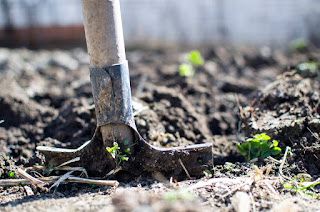The
Role of Soil Animals and Its Process in Agriculture
The
role of earthworm as a standout amongst the most critical gatherings of
biological community designs in human-adjusted and common habitats has been
progressively perceived just during the most recent 30 years, yet worms and
people have been acting together in building landscapes for millennia. This
relationship is very much spoken to in the pre-Columbian raised fields, in the
flood-prone area inclined territory, yet additionally by the conceivably
noteworthy role of earthworms in the development and strength of Amazonian Dark
Earths. The soil is naturally, biologically, and physically adjusted;
supplements are trans located; the natural issue is deteriorated and changed;
and the encompassing biota interfaces as an expansive symphony where the soil
musicians play together on the different instruments however where earthworms
plays the main part, improving microbial movement and by and large fortifying
plant development.
Role of Earthworm
Earthworms
influence pedogenesis in two principal courses: first by altering soil profiles
through bioturbation and second by their impacts on disintegration and supplement
cycling. Bioturbation through tunnelling and casting moves material inside and
between soil horizons, mixing organic and inorganic parts; moreover, it
annihilates totals and makes new ones, changing porosity, air circulation, and
water invasion. Earthworm feeding on natural materials of different ages
expands comminution, fortifying microbial movement and influencing
disintegration rates and supplement cycling. Soil scraped area and mixing in
the product and gizzard, together with stomach related catalysts and microbial
action in gut entry, influence mineral weathering, and the introduction of soil
platelets. The particular significance of earthworm to pedogenetic forms relies
upon the environmental classification of the specific worm, which fills in as a
culmination of worm work in the dirt.

There
are three principle known classifications albeit transitional classifications
among these can be utilized for species that don’t entirely fit the framework.
Earthworms are one of the three best bioturbators and biological system designs
in soils, together with ants and termites and their activities are known to
influence pedogenesis, the right now acknowledged model for the beginning does
exclude the part of environmental engineers. These soil macroinvertebrates
might be imperative “fixings” in ADE beginning and support, so this model has
been revised so as to incorporate the activity of biological system engineers.
Earthworms
can ingest biochar particles both in situ and ex-situ that is, in the field and
upon expansion to the soil. There is some proof that biochar might be dangerous
to an earthworm, however, not all examinations have recognized such an impact.
The primer outcomes displayed here demonstrate a high extent of Pontoscolex
species and Ocnerodrilidae in ADE. Future work must spotlight on deciding if
this biodiversity is illustrative of ADE all through Amazonia, both under
agriculture and native forest.





Comments
Post a Comment